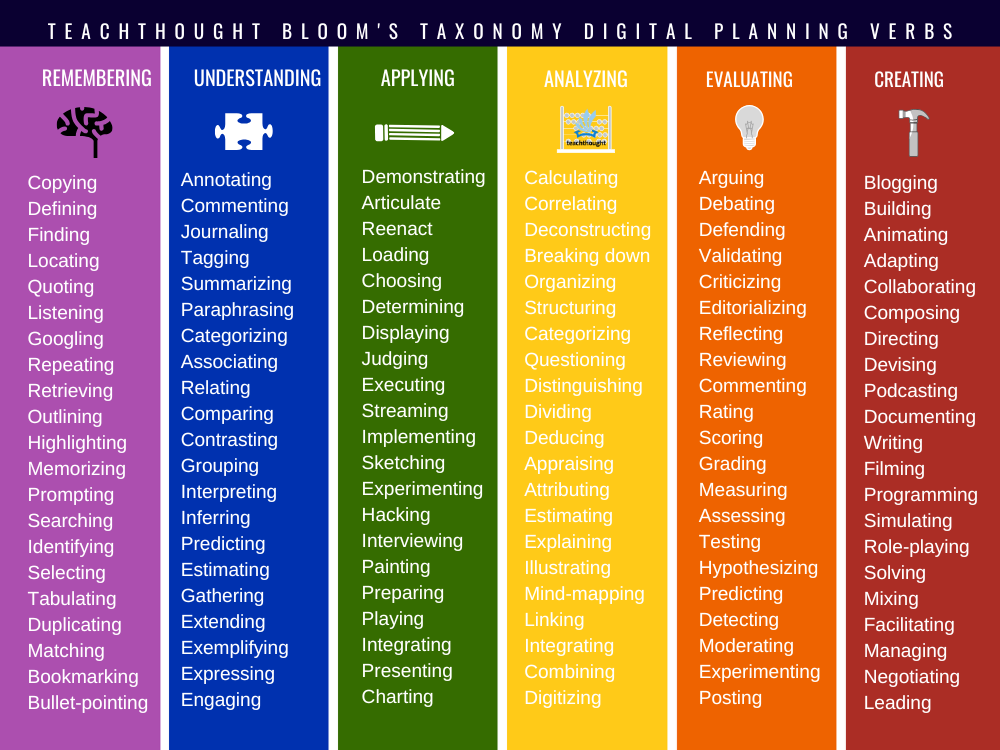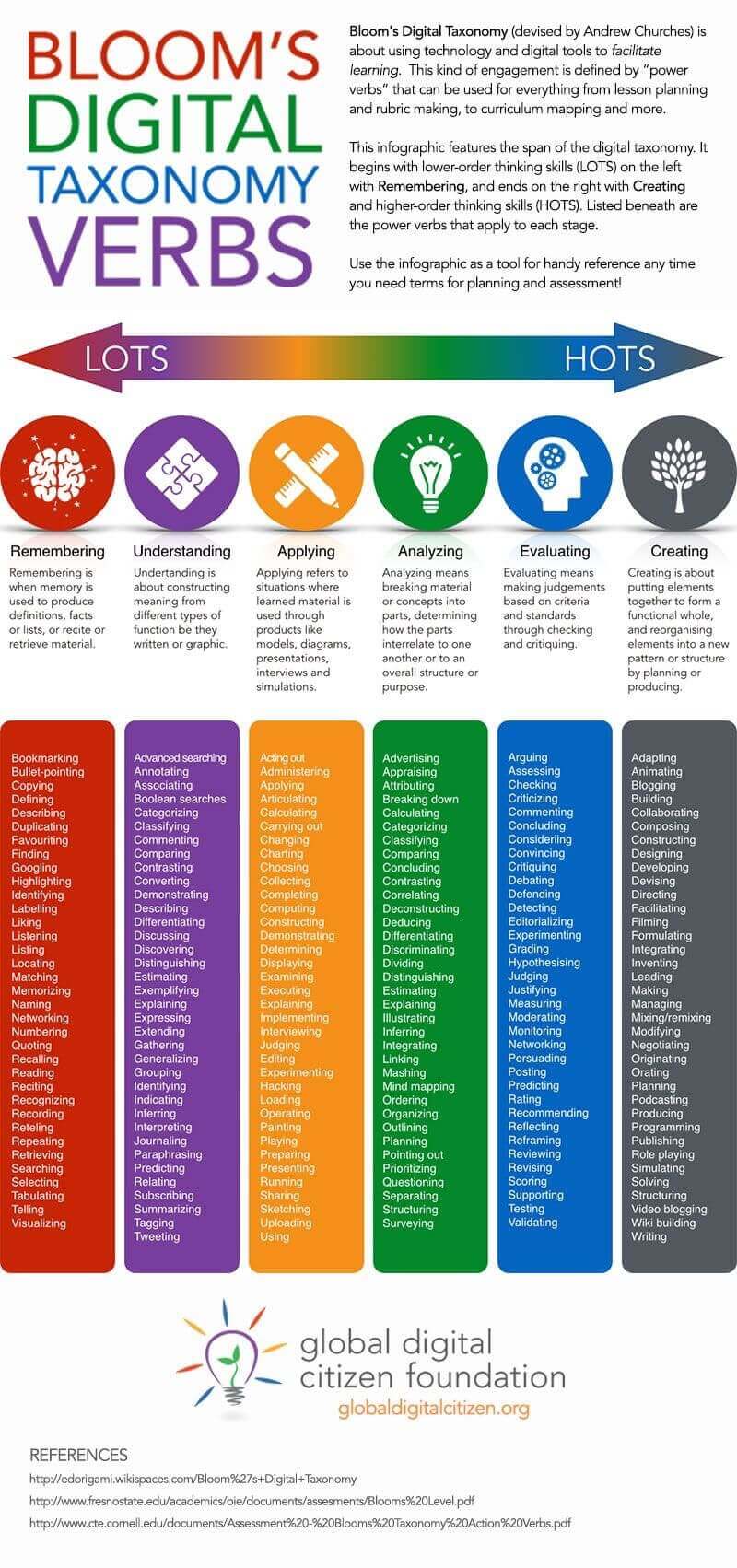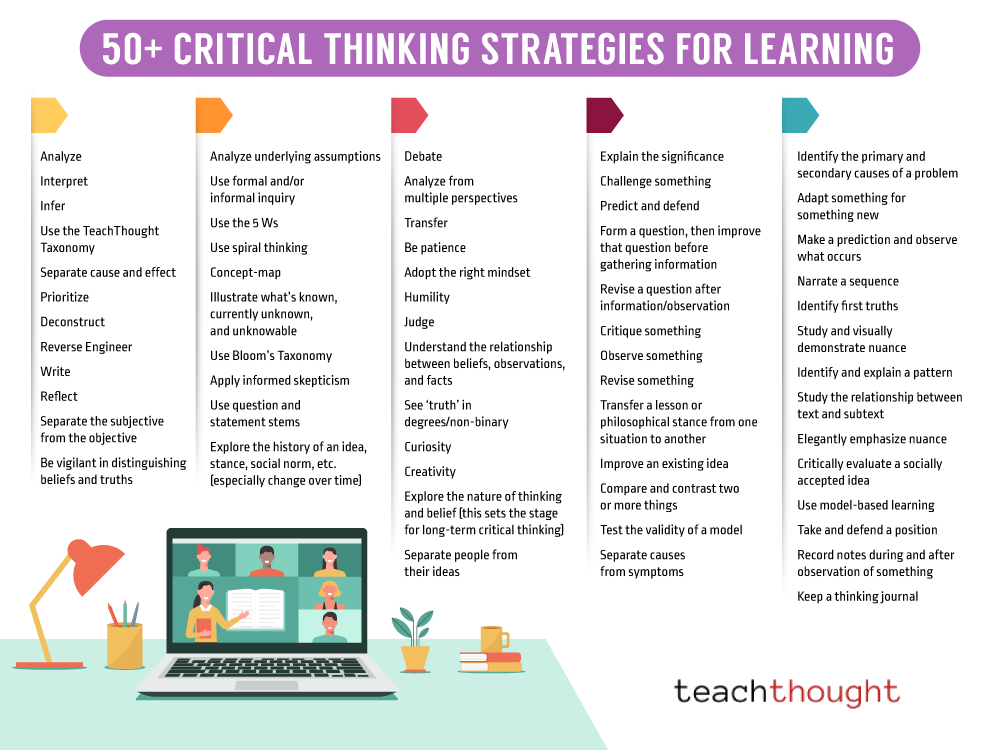by TeachThought Workers
At TeachThought, we’re supporters of any studying taxonomy.
(We even created our personal, the TeachThought Studying Taxonomy.)
Studying taxonomies assist us take into consideration how studying occurs, highlighting that there are various methods to border considering.
Bloom’s Digital Taxonomy Verbs adapt Bloom’s authentic cognitive framework for digital studying, serving to Okay-12 lecturers combine expertise whereas constructing important considering abilities. The taxonomy organizes digital actions into ranges like remembering, understanding, making use of, analyzing, evaluating, and creating, every with tech-based verbs that assist particular studying objectives.
Which means we will have taxonomies for differentiation and taxonomies for considering and taxonomies for duties and evaluation–so many prospects for analyzing the precise strategy of considering, studying, and the appliance of every.
This results in cool visuals–Bloom’s Taxonomy posters, for instance.
It will probably additionally result in instruments that assist to design classes, items, and assessments–Bloom’s Taxonomy verbs work properly right here.
You may get a ready-for-the-classroom model of Bloom’s Digital Taxonomy for $6.95.

This sort of framework—merging Bloom’s Taxonomy with digital and social instruments—can assist lecturers make extra intentional selections about how college students interact with content material in trendy studying environments. Within the graphic under, we’ve organized 126 “energy verbs” generally related to digital studying into the acquainted ranges of Bloom’s: Keep in mind, Perceive, Apply, Analyze, Consider, and Create. You’ll see verbs like reasonable, duplicate, weblog, construct wikis, and podcast—all examples of how expertise can form and lengthen pupil considering.
It’s necessary to know, although, that these classes aren’t inflexible. A single verb might arguably seem at a number of ranges relying on the context. Running a blog, for instance, may contain easy recall in a single project and higher-order synthesis or analysis in one other. That flexibility is a part of what makes Bloom’s Taxonomy helpful—but in addition why it’s by no means an ideal match.
In the end, the worth isn’t in getting every verb in precisely the suitable place. The worth is in considering rigorously concerning the sorts of considering we’re asking college students to do—and the way digital instruments can deepen or lengthen that considering in significant methods. Whether or not or not you utilize this actual framework, the train of connecting cognitive processes to digital duties is a strong option to sharpen your planning and higher assist vital considering in your classroom.
The result’s a software that may assist lecturers take into consideration the degrees of higher-order considering that go into these sorts of actions and initiatives. To be clear, simply because a verb is in a single class doesn’t imply it may well’t even be used at greater or decrease ranges of considering (i.e., seem in different classes of Bloom’s Digital Taxonomy).
On the lookout for a conventional model of Bloom’s verbs? View our Bloom’s Taxonomy Verbs for Educating and Planning.
Wish to see how these verbs align visually with considering ranges? Discover our Bloom’s Digital Taxonomy Chart.
In truth, there’s a important quantity of subjectivity and editorializing that goes into any variety framework that purports to stipulate how considering occurs. It’s not a precise science. Nonetheless, simply the truth that we’re exploring considering and digital duties and pupil work collectively is a minimum of as priceless as any single framework in and of itself.
By doing this sort of work, we collectively–you, TeachThought, directors, faculties, researchers, universities, and many others.–can develop ‘fluency’ within the murky and summary area of utilized neurology. We are able to start to know how understanding occurs.
Bloom’s Digital Taxonomy Energy Verbs
Hopefully you discover the graphic helpful to discover, focus on, plan, and in any other case take part in Bloom’s Digital Taxonomy.
You may as well discover a classroom-ready model of our Bloom’s Taxonomy Digital Planning Verbs & Playing cards to shorten prep time and concentrate on broader lesson and unit planning methods to your college students.
If in case you have any verbs you’d prefer to see added to the chart, tell us within the feedback under.
126 Bloom’s Taxonomy Verbs For Digital Studying
Remembering
- Copying
- Defining
- Discovering
- Finding
- Quoting
- Listening
- Googling
- Repeating
- Retrieving
- Outlining
- Highlighting
- Memorizing
- Prompting (ChatGPT, for instance)
- Looking out
- Figuring out
- Deciding on
- Tabulating
- Duplicating
- Matching
- Bookmarking
- Bullet-pointing
Understanding
- Annotating
- Commenting
- Journaling
- Tagging
- Summarizing
- Paraphrasing
- Categorizing
- Associating
- Relating
- Evaluating
- Contrasting
- Grouping
- Deciphering
- Inferring
- Predicting
- Estimating
- Gathering
- Extending
- Exemplifying
- Expressing
- Partaking
Making use of
- Demonstrating
- Articulate
- Reenact
- Loading
- Selecting
- Figuring out
- Displaying
- Judging
- Executing
- Streaming
- Implementing
- Sketching
- Experimenting
- Hacking
- Interviewing
- Portray
- Getting ready
- Enjoying
- Integrating
- Presenting
- Charting
Analyzing
- Calculating
- Correlating
- Deconstructing
- Breaking down
- Organizing
- Structuring
- Categorizing
- Questioning
- Distinguishing
- Dividing
- Deducing
- Appraising
- Attributing
- Estimating
- Explaining
- Illustrating
- Thoughts-mapping
- Linking
- Integrating
- Combining
- Digitizing
Evaluating
- Arguing
- Debating
- Defending
- Validating
- Criticizing
- Editorializing
- Reflecting
- Reviewing
- Commenting
- Ranking
- Scoring
- Grading
- Measuring
- Assessing
- Testing
- Hypothesizing
- Predicting
- Detecting
- Moderating
- Experimenting
- Posting
Creating
- Running a blog
- Constructing
- Animating
- Adapting
- Collaborating
- Composing
- Directing
- Streaming
- Podcasting
- Documenting
- Writing
- Filming
- Programming
- Simulating
- Function-playing
- Fixing
- Mixing
- Facilitating
- Managing
- Negotiating
- Main
One other model of the graphic from International Digital Citizen seems under.




